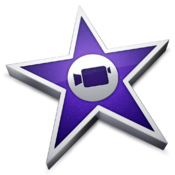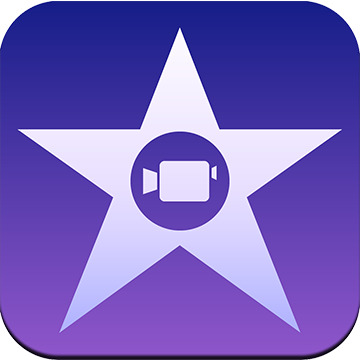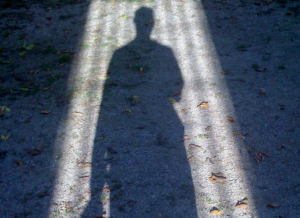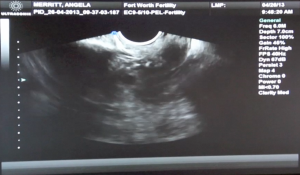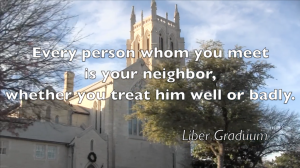Digital Storytelling Archive
The following is a listing of stories our students and faculty have chosen to share publicly through the blog.
Faculty Stories
- Mitzi Adams – Strong Like a River
- Cheryl Bacon – The Buzzer
- Mathew Bardwell – The Time We Accidentally Adopted 11 Dogs
- Bill Carroll – 40
- Karen Cukrowski – Once Upon a Time
- Kyle Dickson – Childhood in Snapshots
- Nathan Driskell – The Flag
- Suanna Haston Davis – Cleo & Jennifer
- Mikee Delony – Letter to Joan
- Michelle Faerber – Not Quite
- Cherisse Flanagan – Batgirl
- Sue Garcia – Master Craftsman
- Al Haley – A Bed in San Francisco
- Al Haley – Copier
- Al Haley – Down on the Farm
- Stephanie Hamm – Perfect Timing
- Karen Hendrick – New London School Explosion
- Dickie Hill – Colis Campbell
- Stephen Johnson – Sure They Can
- Dan McGregor – Lost at Sea
- Jenn Rogers – Her Name is Hope
- Nil Santana – From Father to Son
- Jennifer Shewmaker – My Daughters’ Mother
- Donald Simpson – Buy a Camera
- Kent Smith – Improv Gardening
- Jeanine Varner – The Empty Desk
- Dora Weathers – The Summer of 1974
- Debbie Williams – Caregiver
- Lorraine Wilson – Ebb and Flow
Scholarly Storytelling
- Jeff Childers – Different
- Mark Hamilton – Hope & Tragedy in Amos
- Kent Smith – Modeling Intentional Community
Why I Teach
Student Pilot
- Sandra Amstutz – Summer Story
- Brance Armstrong
- Chris Campbell
- Anna Ciufo
- Kimmie Flanders
- Leslie Lewis
- Denzil Lim
- Seth Montgomery
- Maddie Pickle
- Whitney Pittard
- Drew Ritchie
- Emily Teel
- Rachel Winkelman
OTHER COURSES
These students stories represent students from Dr. Stephen Johnson and Dr. Kyle Dickson’s sections of Cornerstone who participated in the initial pilot. For updates on other courses using media projects, check the Digital Storytelling blog posts below.
Storytelling in Creative Writing program
Al Haley, writer-in-residence and professor of English, was an alum of our very first digital storytelling workshop in 2011 and has been helping us lead faculty workshops on campus for the last year. His work with the scholarly storytelling group last December helped many of the participants see the potential of mixed media writing and storytelling in their teaching and research. Here are a couple of Al’s past stories.
.
This semester Al asked students in his Creative Nonfiction Workshop and a new class on Micro-Narratives to produce their own digital stories as an extension of their other writing in both courses. Here are a few examples of their work.
.
Micro-Narratives
Blank Spots Fill Holes – Julia Curtis
Missing Home – Brittney Starkey
Small World – Adrian Patenaude
Creative Nonfiction
.
Literacy video projects from Advanced Comp
Thanks to Dr. Cole Bennett and his ENGL 325: Advanced Comp class for sharing their Literacies projects again this year. .
The course introduces students to “theories of literacy from a variety of disciplinary perspectives, paying particular attention to readings that emphasize social and political issues related to reading and writing.” then concluded with student-produced videos introducing a cultural literacy of their own:
“Rhetorically, this video should attempt to convince the viewer that 1) the activity under consideration qualifies as an expanded form of literacy; and 2) society would benefit as a whole if such argument were accepted. How does the subject fall under a definition of literacy? Which definition? Why does it matter? How are our lives enriched if we agree with you? How might your opponents disagree with you, and how would you address such concerns?”
Here are a few examples of their work.
.
Scholarly Storytelling workshop
This last month we welcomed a remarkable group of faculty to join us for our first Scholarly Storytelling workshop in the Learning Studio. We wanted to explore the potential of mixed-media storytelling to communicate messages drawn from research and professional writing with a wider audience.
Al Haley and Kyle Dickson led the workshop which paralleled the basic structure of a three-day storytelling workshop with the exception that the final products didn’t follow any one basic format. Presentations included expanded training in the proper use and citation of digital sources and advanced production options like working with a green-screen or teleprompter. The workshop also coincided with planning for the One-Button Studio which will make these types of stories even easier to produce in the future.
Here are just a few examples from the workshop.
.
Faculty Examples
Hope & Tragedy in Amos – Mark Hamilton
Modeling Intentional Community – Kent Smith
.
Context
Each of the projects was produced with a particular audience in mind. Al was presenting at a conference and wanted a way to talk about his interest in mixed-media texts. Mark was thinking about videos to introduce biblical texts for a media commentary project he was considering. Kent was working with colleagues on a research project to share interviews with members of intentional communities around the country. Jeff had a particular role for his project to play within a graduate theology class. This last demonstrates the complexity of these messages for particular audiences:
“This project is intended to stimulate conversation about synthesis in a graduate class. All the students will have read assigned texts, and one of the themes on which I will focus in class is the attempt in early Syriac Christianity to have radically different styles of discipleship co-existing in the same communities. It was difficult for them, as for us, and I prepared a film that 1) underscores a range of related themes in certain texts (which they will have read), 2) grounds the topic in a particular socio-historic setting, yet 3) suggestively associates their struggles maintaining unity-in-diversity with our own struggles to do so, in several different arenas of interest to Christian communities (i.e. worship styles, fellowship, ministry, race, etc.). The music is that of Syrian Orthodox hymnody.”.
Overall, a remarkably diverse group of teachers and scholars thinking about the potential of media tools to forward their work across campus.
Art History media projects
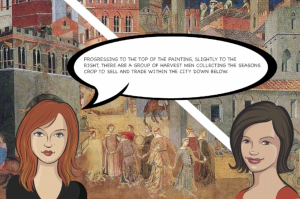 Thanks to Kenny Jones for sending along sample projects from ART 221, General Survey 1. Students worked in teams to produce an 8-10 minute comparison of three artifacts, two from their survey of art history and one more contemporary example.
Thanks to Kenny Jones for sending along sample projects from ART 221, General Survey 1. Students worked in teams to produce an 8-10 minute comparison of three artifacts, two from their survey of art history and one more contemporary example.
Here are a few of their projects with a summary of the assignment.
Student Examples
- Warka Vase and Linear Storytelling
- Akhenaten and Portraying Leadership
- Venus of Willendorf and Ideal Beauty
- Khafre Enthroned
Project Assignment
I. Choosing a Topic for the Podcast:
Our goal is the analysis of the form, iconography and technique of artifacts within their historic context, so as to visually demonstrate their main paradigm characteristics. Use the visual media of the podcast to make a visual argument for your thesis, of course you should include verbal material as well.
If you aren’t showing us visual information you are not taking advantage of this visual media – be sure to show us and not just tell us. Consider the fact that what you are really doing is helping us to envision information. That being said, do not interpret this as a invitation to overwhelm us with useless decorative or ornamental packaging, e.g. distracting chart junk, vacuous clip art, baffling special effects, etc. Be sure to check out this resource on envisioning information.
Compare and contrast two artifacts from our textbook. It may be any significant artifact found in our text, e.g. painting, sculpture, architecture, piece of furniture, etc. In addition to these two artifacts compare a current physical, artifact from your primary, normal cultural environment, e.g. artwork, architecture, or appliance, etc. (current means it was substantively made, not remodeled or made famous but actually made within the 21st century).
This means you will be comparing a total of three artifacts:
1. the primary artifact from our text
2. the artifact that is older or newer than the primary artifact, also from our textbook.
3. the artifact that can help you see your paradigm – that was made in 21st century and is a relevant, physical artifact from your primary, normal cultural environment. (Do not use artifacts that were remolded, refurbished or made famous in the 21st century, these do no qualify for having been created and constructed in this century and are therefore not relevant reflections of your current paradigm).
for more details, ART 221: General Survey 1 Blog
.
Nutrition Controversy podcasts
This fall Dr. Martha Smallwood asked students in NUTR 221: Introductory Nutrition to team up to produce media projects on controversies in the field. Working with a partner, they were supposed to find sources from scientific journals as well as popular magazines and websites that presented both sides in the controversy and evaluate the strength of sources on both sides.
Thanks to Dr. Smallwood and her students for sharing a few examples of their work.
.
Student Examples
